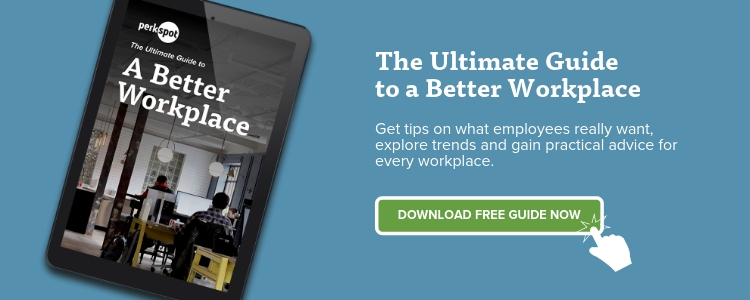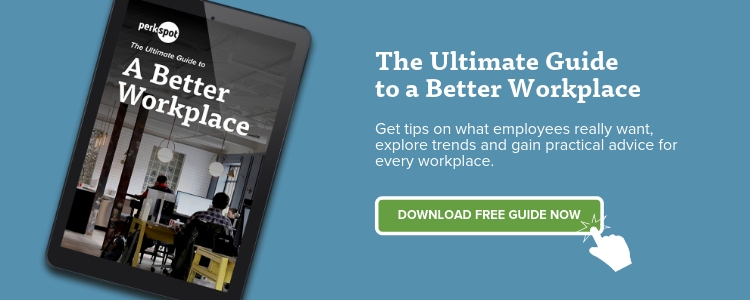Tips for Employee Recognition
As we explore what it means to build a better workplace, we can’t help but dedicate some time to employee recognition. Recognizing employees should be an integral part of any workplace, so here are some tips for employee recognition that are quick and easy to implement.

Get Social
One of the easiest ways to recognize employees is by utilizing your social media channels. There are 2.62 billion people in the world who use social media. Chances are, the majority of your employees are included in this number. What better way to show your appreciation than by posting it publicly in the channels that they already visit throughout the week? Celebrate your employees on your social channels – it’s free and easy.
Stretch Their Paycheck
At PerkSpot, we love being in the business of stretching paychecks. Of course, you might be thinking we do this in the form of exclusive discounts, but we’ve also launched a recognition program that makes recognition practical and meaningful. Managers or peers can send an email recognizing an employee for a job well done along with credits to spend at our Gift Card store. It doesn’t have to be a million dollars to be meaningful. Even $5 can make someone smile and enjoy their favorite cup of coffee in the morning.
Recognize Their Strengths
As we state in our Ultimate Guide to Build a Better Workplace, 60% of employees believe that working for a place that enables them to use their strengths is very important to them. At PerkSpot, we understand the value that comes with recognizing an employees’ strengths. That’s why one of our milestone recognition programs comes in the form of sabbaticals. After an employee reaches a three-year tenure at PerkSpot, they get two weeks off and a small stipend to grow professionally and advance their skills. This may not be the most obvious form of recognition, but it’s definitely impactful.
Embrace Your Culture
Each Friday at PerkSpot we celebrate the week with beers and cheers. It fits our culture and reminds us all that one of our core values is to “Have Fun”. As a bonus, we also choose one PerkSpotter as a “PerkSpot Super Star” where they are recognized for their achievements that week and given a gigantic blue trophy along with some extra cash to spend in our R&R platform. This casual atmosphere works really well for our culture and makes recognition easy to remember. Find what works for your company and make sure your recognition aligns with your values and your culture.
What are some ways you’ve implemented recognition at your company? We’d love to hear your tips for employee recognition.














